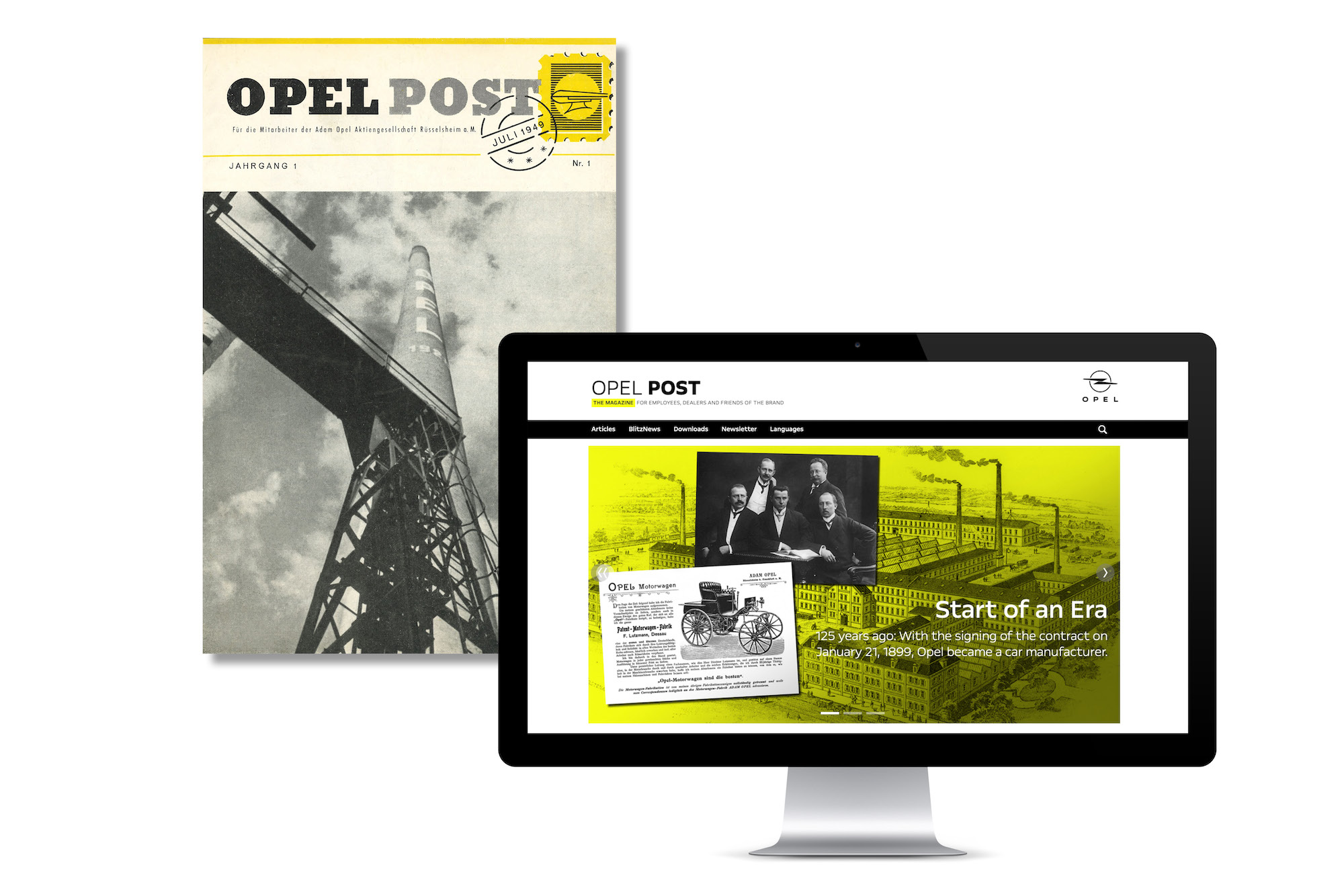In 2024, Opel is celebrating 125 years of automobile manufacturing. This decades-long success has been made possible by the people who have worked for the brand and identify with it. That is why they are the focus of the “Opel Post”, together with the carlines and company news. Now 75 years old, the Opel Post is one of the most tradition-rich employee magazines in German industry. Launched as a print magazine, it has been available worldwide as a current web magazine via the Internet since 2013.
“Seventy-five years of Opel Post – that is 75 years of stories and articles on the people, the cars and the projects that make the brand what it is. “The Opel Post provides an insight into what is going on at Opel – authentic, informative and very close to the people. An exclusive look behind the scenes included,” said Opel’s Vice President of Communications, Harald Hamprecht. “Not many companies can boast a magazine that keeps its employees so up to date with news from their own company over such a long period of time,” added editor-in-chief Mark Bennett, who also manages the Opel Media Bureau within the communications department. After all, the Opel Post is one of the most traditional employee magazines in German industry.
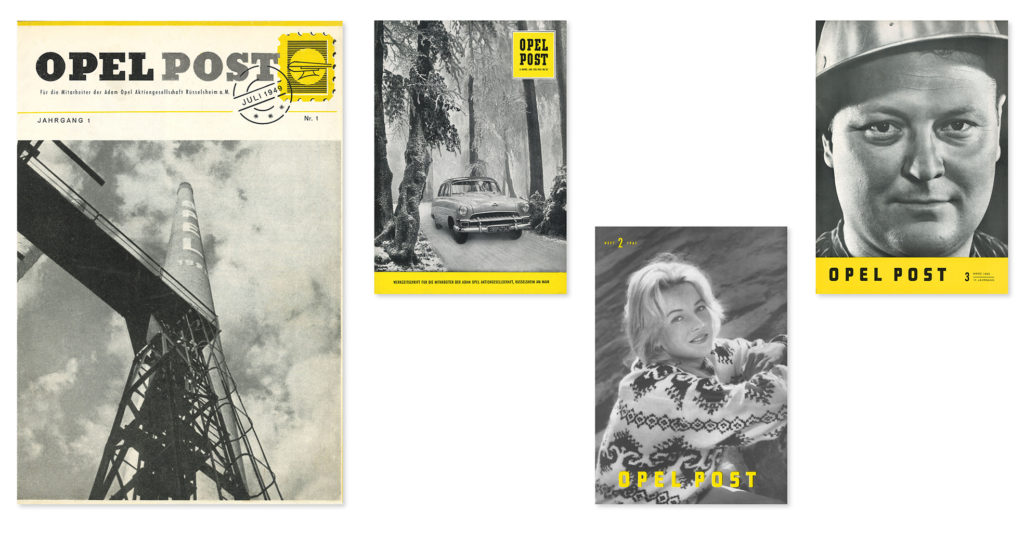
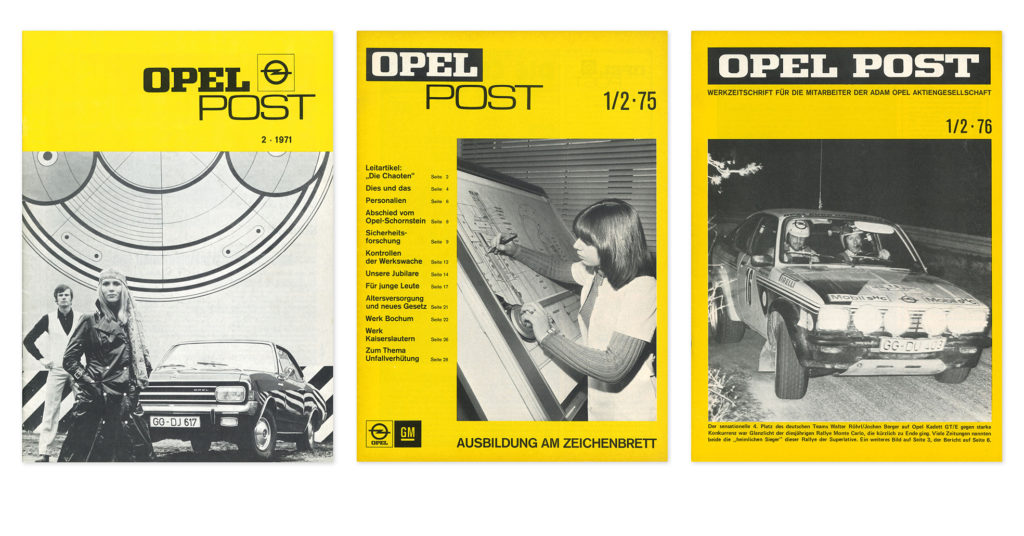
There had already been a company newspaper before the Opel Post. The “Opel Geist” (Opel Spirit) appeared for the first time in 1930, the “Opel Kamerad” (Opel Comrade) – which was little more than a propaganda tool – followed from 1936 to 1944. The Opel Post, as known today, was born in 1949. A new mentality emerged with the publication that suited the new, democratic Germany and the realignment of Opel. The cooperation between management and staff was to form the core of the articles. The new newspaper “can and will do a lot to promote this cooperation and the spirit of mutual trust that it requires,” announced the then chairman of the board, Edward Zdunek, in the first issue.
From “Opel Geist” to Opel Post
Democracy and co-determination were the top priorities. This was already evident in the second edition, which contained a competition asking the workforce to suggest titles for the new publication (the name “Opel Post” was supposed to be only temporary; the employees were charged with finding the final title). In the end, a jury chose “Under the Opel Tower” as the winner. But it was also clear from the majority of submissions that the employees wanted to keep the name “Opel Post” – and that is what the employee magazine is called to this day.
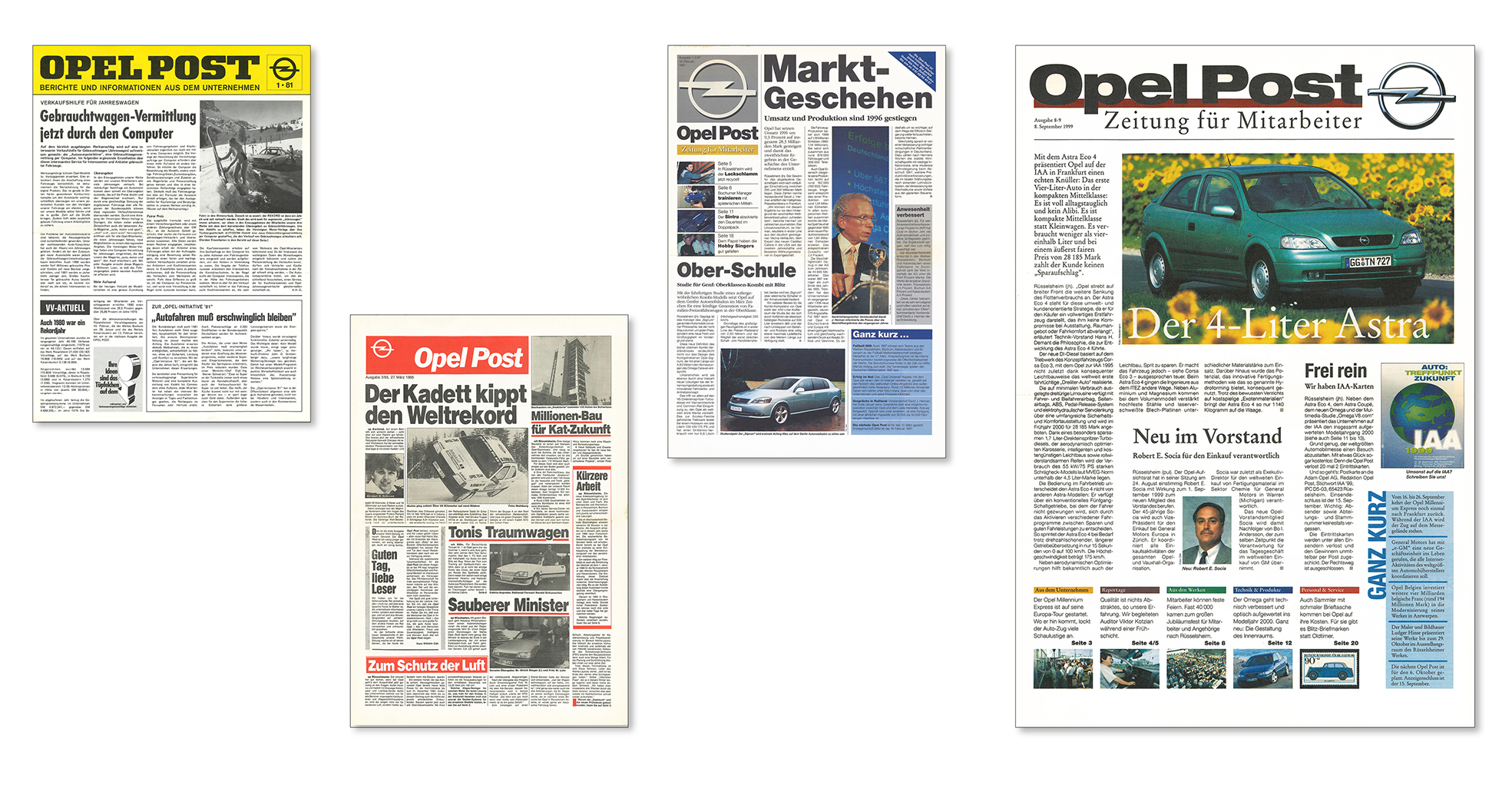
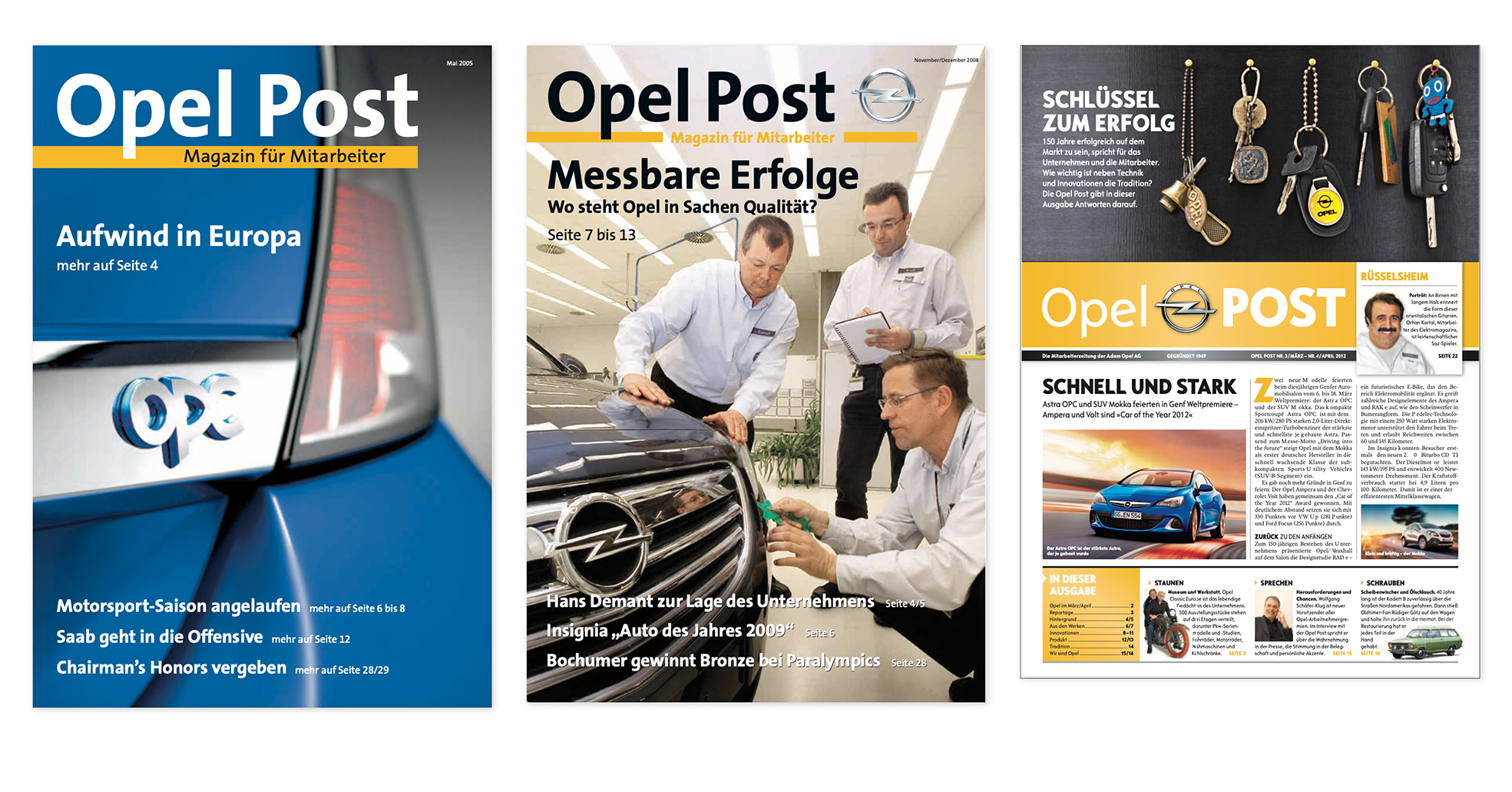
“It’s hard to please everyone,” mused Karl Heinz Mai, the first editor-in-chief of the Opel Post. But openness and the ability to accept criticism were among the strengths of the new publication. For example, the unusual inclusion of the annual report inside the Opel Post in 1954 was a topic of conversation on the assembly line as well as in the offices. Also, according to Mai, the Opel Post had quickly developed “from a modest newsletter to a comprehensive magazine that is well-respected by the public and often quoted in the press and specialist newspapers”.
Stay close to the employees
This included reactions to the changing appearance of the employee newspaper over the decades. In 1949, the Opel Post started in magazine format, with full-format covers on which, in addition to the Opel Post lettering, other letters were gradually introduced. The Opel-specific yellow was used less and less over the years. From 1981, the Opel Post appeared in a newspaper format. Things got colourful with the introduction of colour photos in 1993. Several facelifts followed, and the Opel Post nameplate, Blitz emblem, number of columns and fonts continually refreshed. In 2005 the magazine format returned.
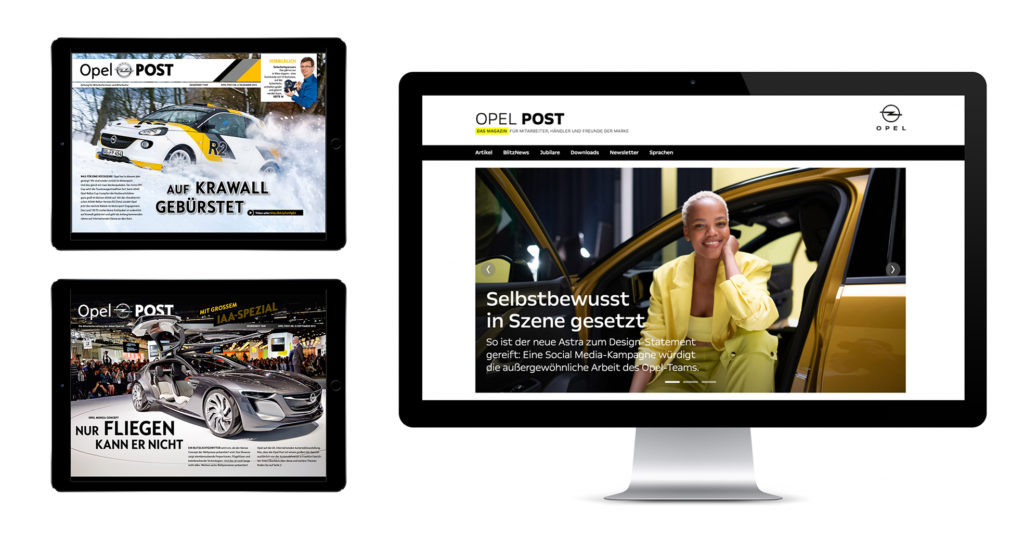
The next major change then came in 2013. The Opel Post faced the challenges and demands of the digital age and became a continuously updated web magazine. Since then, as “Opel Post online”, it has been available on the internet in two languages (German and English) – 24/7 and all over the world.
Modern, up-to-date and always available
In 2021, the web design was modified again to make the range of texts, photos and videos even more usable, for smartphones and tablets as well as on large displays. The main topics are still interesting facts about the company, as well as portraits of employees, dealers, tuners and Opel fans with their dream cars. Users can also choose from a variety of downloads as an additional offering beyond reading, ranging from design sketches, painting and craft templates for children to desktop motifs for the PC. With these options, the Opel Post in its anniversary year remains close to its readership and up to date.
February 2024
